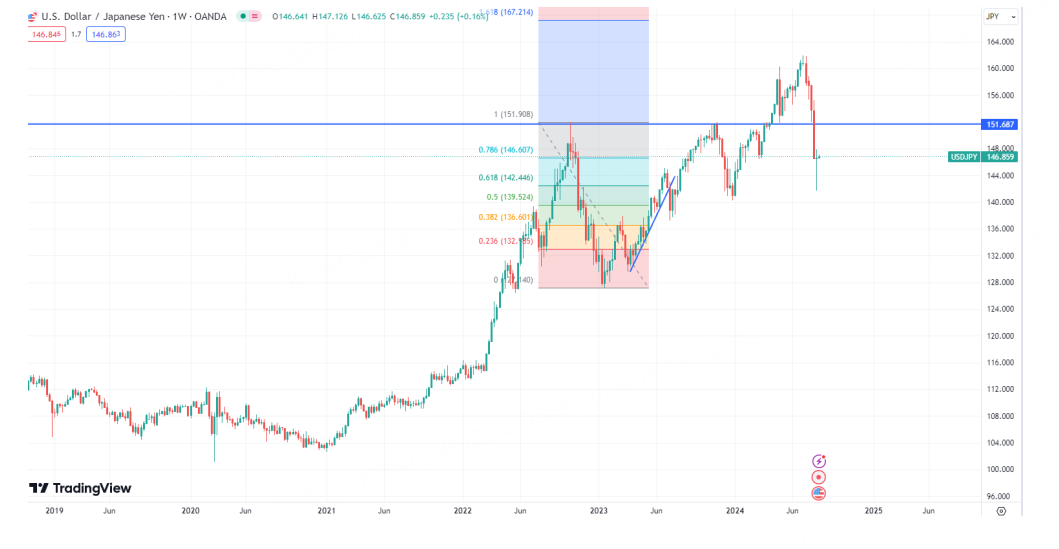Last week, most markets began to stabilize and rebound, more or less rebounding from the previous sharp drop caused by the Bank of Japan's raid. Under the pressure of excessive turmoil in the global market, the Bank of Japan "slapped itself in the face", but from the market point of view, it still needs a clear signal for the market to return to rising trend.
There have been many articles that have analyzed and discussed the logic of the Bank of Japan's interest rate increase. I believe everyone has a preliminary concept. Theoretically, the problem can be solved without rate hike, but everyone is inevitably frightened and doubts whether this is a delaying strategy or a test of market pressure resistance.
In the eye of the storm is naturally the exchange rate performance of the US dollar and the Japanese yen. In the past decade or so, the yen has been in a clear process of unilateral depreciation, but there are also large (yen) rebounds of 125-98 and 151-127, and the time period of the two rounds is not short.
Taking history as a mirror, the yen's recovery may not end quickly just because of last week's long lower shadow. The important pressure position of 151 in the early stage now acts as the resistance of counter-pressure again. Until the market effectively returns to above this level, it cannot be easily considered that the yen problem has been fully solved.
Of course, after the sudden attack caused panic, the sustained rebound of the yen does not mean that it will continue to drive the decline of major markets in the future.
Take the U.S. stock index as an example. The pace of its previous correction was ahead of the rebound of the yen. In addition, in addition to the Japanese yen, the traditional safe-haven indicators: gold, U.S. debt, U.S. dollar, etc. have not gone out of a high degree of unity at present. So last week, we also said that the problem of recession has been predicted by some people all the time, and someone will definitely come true in the end, but no one knows when it will happen. The consequence of your rush is likely to be repeatedly crushed by the original trend.
Based on the above situation, we expect that the follow-up market (USD/JPY exchange rate) may rebound for several weeks and step back on the pressure, then make a downward correction again, and end the adjustment at the end of the year or early next year. If the story line develops in this way, it will imply that the market will enter a certain junk time from now to before and after the US election, or it will still be at a steady and rising pace before. With the success of Harris's counterattack, the set of things played by the Democratic Party in previous years will take another 6-12 months before it will be completely over.
On the contrary, if the final result of the adjustment here is a short, flat and fast pattern, it is necessary to see a new high exchange rate. Under this mode, the market will launch the final short squeeze in the next few months and peak near the general election node, and the probability of Trump becoming a winner will be greater. But considering the structural situation, it is more likely that the US-Japan exchange rates will take time to digest. Choosing range trading on the Japanese yen and intervening on dips on trending varieties will be a strategic combination that can be considered.
$NQ100 Index Main 2409 (NQmain) $$SP500 Index Main 2409 (ESmain) $$Dow Jones Index Main 2409 (YMmain) $$Gold Main 2412 (GCmain) $$WTI Crude Oil Main 2409 (CLmain) $

Comments